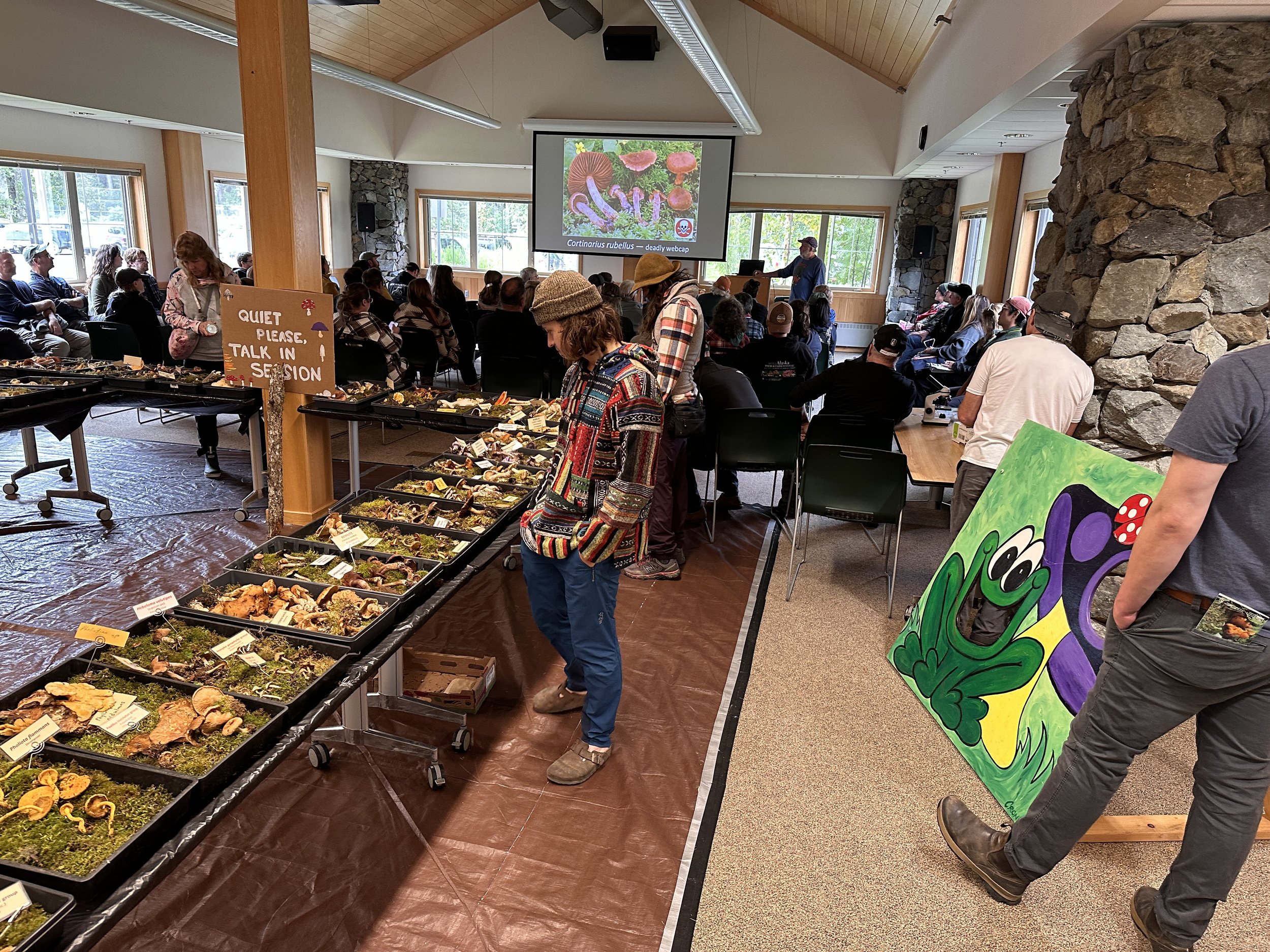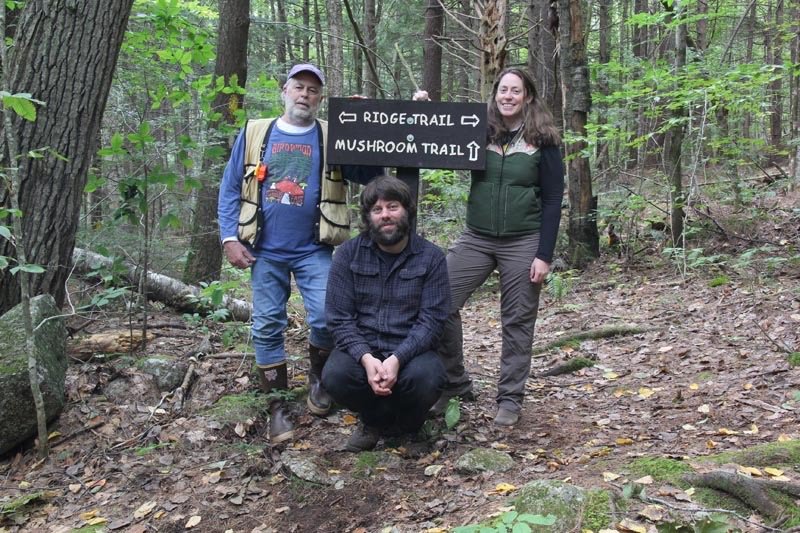Mushroom count low for this year’s Fungus Fair
By Soren Wuerth
TNews Editor
Mushrooms were everywhere over Labor Day Weekend: a collection on the ground at a trailhead, an assortment on the tailgate of a pickup truck, and, especially, in Girdwood's Community Center where foragers had gathered a sample of every species found during the annual Fungus Fair.
Despite the veritable cornucopia, this year's collection was smaller than previous years, said organizer and local mycologist Kate Mohatt.
The Fungus Fair at the Girdwood Community Center was well attended and nearly all of the weekend forays were quickly sold out. Four visiting mycologists gave free presentations. (Photo by Soren Wuerth)
Mohatt said mushrooms are arriving the latest in 17 years of Fungus Fairs, a phenomenon that is occurring across the Pacific Northwest due to warmer summers. Warmer summers are a byproduct of the fossil-fuel driven climate emergency.
As she spoke just outside the center Sunday afternoon, Mohatt glanced back in to see how visiting mycologist Steve Trudell's presentation was going.
Trudell spoke about the history of mushroom identification in Alaska. The first surveys were conducted in 1899 when railroad tycoon Edward Harriman gathered a team of 23 scientists aboard his steamer for a two-month expedition.
"Mushrooms of Alaska" co-author Steve Trudell (left), Noah Siegel (center) and Kate Mohatt. The book is expected to be released next summer by Timber Press. (Photo by Soren Wuerth)
Only a handful of mushrooms were identified by Harriman's botanists and it wasn't until the mid-1900s when two amateur Alaska mycologists, Virginia Wells and Phyllis Kempton, began a serious catalogue.
"They were totally amateur, but they worked like professionals," Trudell told a packed house. The women's first book, "Know Alaska Mushrooms," cost a quarter and had 18 mushrooms.
Later Alaska mushroom guide books increased the number of identified species to around 100 and by the mid-naughts, the number had increased to 300. Today, mycologists have identified around 1,500 species in Alaska, though there could be more than 5,000 species, Trudell said.
Mycologist Steve Trudell , from the University of Washington, reviews the history of mushroom identification in. Alaska. (Photo by Soren Wuerth)
Mohatt, Trudell, and Noah Siegel co-authored a new mushroom field guide, "Mushrooms of Alaska," that will be released next year and contains 425 species, "unless they come after us and make us limit the number of pages," Trudell said.
The book, which Mohatt's team has been working on for 15 years, is dedicated to Wells and Kempton. And even with such a thorough inventory, mycologists still "don't know enough" about all the species in the state.
And mushrooms play an essential role in habitat. The endangered spotted owl brought logging to a standstill in the Pacific Northwest. "Spotted owls eat voles and voles eat mushrooms," Mohatt said.
In Girdwood, there is little baseline date on mushrooms and their habitat. Mohatt said two falls ago, she found a hygrophorus, an edible mushroom near Crow Creek Road.
An edible Alaskan Gold mushroom decks tables with a local collection. (Photo by Soren Wuerth)
"It smells like Simple Green," she said. "Is that thing rare? Dunno."
Knowledge and appreciation of mushrooms is exactly the point of the Fungus Fair, however.
Inside, Trudell showed a slide of a poisonous mushroom, galerina marginata, or "funeral bell". The mushroom is toxic if you ingest it (though no mushroom is poisonous to touch).
"Learn the stuff that can kill ya, then go from there," Trudell said.




